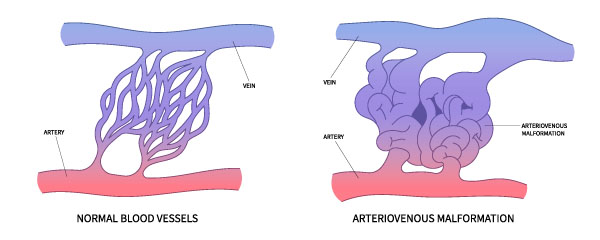For Patients
 Hereditary Hemorrhagic Telangiectasia (HHT) or Osler-Weber-Rendu Syndrome is an inherited disorder that causes abnormal development of some of the blood vessels in the body. These abnormal blood vessels are called telangiectasias when they develop in the skin and GI tract. Malformations of blood vessels that form in certain organs of the body such as the lungs, brain, and liver are called arteriovenous malformations or AVMs. The most common feature of HHT are nosebleeds which are caused by bleeding telangiectasias in the nose.
Hereditary Hemorrhagic Telangiectasia (HHT) or Osler-Weber-Rendu Syndrome is an inherited disorder that causes abnormal development of some of the blood vessels in the body. These abnormal blood vessels are called telangiectasias when they develop in the skin and GI tract. Malformations of blood vessels that form in certain organs of the body such as the lungs, brain, and liver are called arteriovenous malformations or AVMs. The most common feature of HHT are nosebleeds which are caused by bleeding telangiectasias in the nose.
HHT has an autosomal dominant inheritance which means that each child of someone with HHT has a 50% chance of inheriting HHT. It is estimated that 1 in every 5000 people in the US has HHT. That means there are approximately 75,000 affected individuals in the US and over 1,000 affected individuals in the state of North Carolina. There are several tests that everyone who is known or suspected to have HHT should have. Since lung and brain AVMs can cause serious damage without warning, and they can be treated, screening (testing) is strongly suggested for these malformations. Both children and adults with HHT are at an increased risk of cerebral hemorrhage, embolic stroke, seizures and brain abscess if brain and lung AVMs are not detected and treated. Other potential complications of HHT can include iron deficiency anemia, low oxygen levels, and pulmonary hypertension. Fortunately, early diagnosis, screening and treatment can help manage and potentially prevent these complications. Unfortunately it is estimated that only 1 out of every 10 people with HHT is aware that they have it.